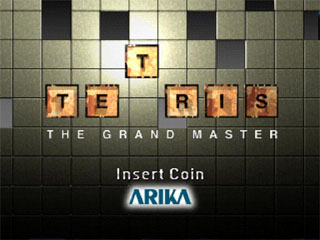
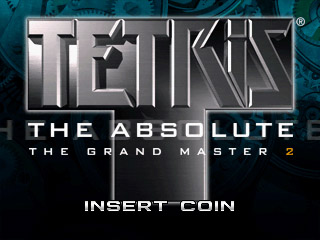
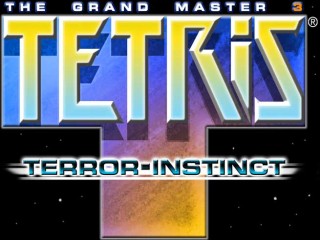
TGM, TGM2, TGM3
This article is dedicated to one of the smallest and least known gamer niche: Tetris the Grand Master players. While it was me who wrote this article, it is truly a work from most of Tetrisconcept's members. All my thanks to them, for without them this article wouldn't have been written. Special thanks to colour_thief for the french to english translation and Jagorochi for the gifs. Also, if you want to know ever more about so-called hardcore Tetris, don't hesitate to visit us at Tetrisconcept ;). Happy reading ! - PetitPrince
There is a famous superplay video found throughout the web. Perhaps you've seen it before?
Or this one ?
Like many people, my initial reaction to these videos was something along the lines of "WTF? O_O Wow, that's fast! This Japanese guy is crazy." and I left it at that. But behind this video there was a game of unimaginable depth: the Tetris the Grand Master series. "Come again? A deep Tetris game? What's so special about that??" you might say. Patience, young grasshopper, for the real presentation is yet to begin.
TGM, this is the reader; reader, I present you Tetris the Grand Master, or TGM for short. Oh. Right. It doesn't quite work that way does it… Let's try this again shall we?
TGM is a Tetris arcade game released in 1998 on Sony Playstation-based ZN-2 hardware (the same as games like Strider 2 and Battle Arena Toshinden 2). It has had 2 arcade sequels (Tetris the Grand Master 2 The Absolute (2000) and Tetris the Grand Master 3 Terror Instinct (2005)) and most recently a release on Xbox 360 (Tetris the Grand Master ACE (2005)). There is also a Tetris with Cardcaptor Sakura Eternal Heart which is more or less part of the series that was released on Playstation, but that's more a puzzle-game-with-Tetris than a "real" Tetris.



TGM, TGM2, TGM3
The people behind TGM are a small studio called Arika. Started by several ex-Capcom employees, it's a relatively little known company. They are responsible for some pretty famous games such as テクニクティクス and 対局麻雀 ネットでロン!… More seriously, they developed the Street Fighter Ex series and are responsible for the celebrated top-quality ports of a couple manic shmups to PS2 (Dodonpachi Dai Ou Jou, Esp. Galuda). They've also done many games with Clamp licenses, such as Card Captor Sakura or Tsubasa Chronicles.
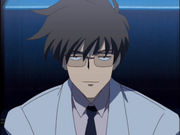
Ichiro Mihara... Uhh, not this one, sorry
The vice president of Arika, and also the designer behind TGM, is Ichiro Mihara. A Capcom veteran (he worked on the original Megaman), he is a diehard perfectionist. For example, he did not hesitate to cancel the PS2 port of Ketsui (another Cave shmup) when it did not meet his expectations in arcade accuracy.
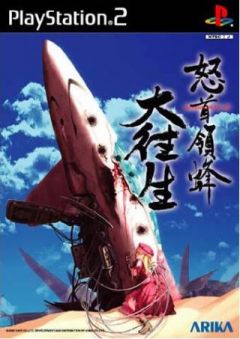
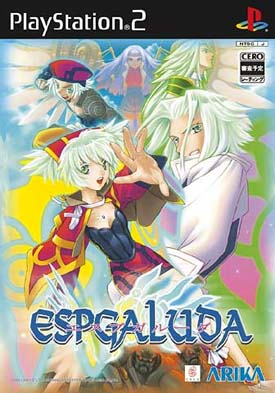
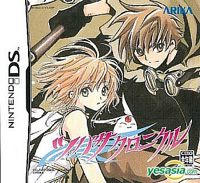
DoDonPachi Dai Ou Jou, Esp Galuda, Tsubasa Chronicles DS
For the rest of the story, I'll give the floor to Needle, a member of the TetrisConcept's forum and a veritable fountain of TGM knowledge (reading Japanese, Mihara's Blog, and 2chan certainly helps with that).
"Back in the late nineties, there was a popular TV variety show called Gotsu Eé Kanji, in which the show hosts occasionally played Tetris against each other on air. Arika was originally internally developing a versus-oriented home console game inspired by that show, with lots of items, PaRappa the Rapper-like characters, and bells & whistles. When they talked with the show's hosts however, they stated that they'd like more of a vanilla game since the beauty of the game lies in its simplicity. In the end, the show folded without Arika's game materializing.
About half an year later, there was some incident that irked Mihara (specifics are not mentioned), which made him decide to develop a game for the arcades. The "simplicity" quote by the TV show host still stuck with him, which influenced his design of the overall game, while the versus parts were carried over from the unreleased console game."
Even if Needle seems to suggest that TGM was born from a TV Show, one musn't forget that TGM was heavily influenced by previous Tetris, notably those developed by Sega (their own Tetris, Flashpoint, Bloxeed) and a fan game ("Shimizu Tetris", a pretty obscure clone for X68000 that for the first time featured a 20G like gameplay). But the original impulse still comes from a television show, a certain culture of players and the mantra of "simplicity".
From its game show roots it took… umm… nothing. Bad example, sorry.
Perhaps the jingles ? From its player culture it took the spirit of
competition. And from the mantra of simplicity, well… Tetris has a pure
and simple premise. All Mihara did was add a few subtle changes to the
basic game. And like the game of Go, it is possible for simple rules to
give birth to complex and deep gameplay.

A game of Go
Let us review the progression of a game of "normal" Tetris, such as
on the Game Boy, for example. It happens like this: the player receives
a piece (tetromino, tetramino, piece, mino, @#*$& piece, noooo not
that one, etc…) which he must place in the game space in such a way
that he fills lines.
When a line is completely filled with blocks, it clears.
As you clear more and more lines, the pieces start falling faster.
Here comes a distinction with TGM: in Game Boy
Tetris, for example, the maximum speed is fixed at 1 unit every every
20th of a second (or one unit every 3 frames, with the Game Boy screen
running at a refresh rate of approximately 60Hz). In TGM, the pieces
never stop falling faster and faster. Putting it another way, the
gravity increases until pieces begin to fall instantly (20 units each frame). And this changes everything.


Why? Because this gravity significantly constrains the player's piece placement options, radically changing the way pieces are stacked. It takes more effort than to simply avoid making holes. You must maintain a vaguely pyramid like shape so that pieces can flow to the sides of the screen. In fact, everything is tuned for high speed play.
Another new element is the IRS (Initial Rotation System). It allows you to pre-rotate pieces before they enter the screen. This feature might seem useless or nearly useless. But at high speed, it is indispensable. These pictures will explain it better than words ever could:



The first animation is a simple demonstration of how IRS works. In
the second animation, the player wants to place his piece to the left.
Not quite up to the challenge, the "member" of the piece blocks the way
putting him in an embarrassing situation. In the third, the player has
properly handled the beast, and now it glides over and into the hole
perfectly. (any dubious interpretation of the preceding passage is
entirely your imagination :D).
Aside from these gameplay additions, certain existing elements had to be changed for high speed play.
Notably, the piece randomizer. Theoretically speaking, each Tetris piece is given out completely at random. This is all well and good, but it permits the existence of "the sequence of doom" (<insert evil laugh here>). What is this? Simply put, it's a streak of S and Z pieces, without others. It's a sequence that forces the player to lose. Well, in practice, you rarely get this exact scenario. But the point still stands: it's really shitty when you get too many of the same piece in a row. To prevent this problem, you need a good piece generator. In a nutshell, here's how TGM's works. We don't truly know if it really works like this, but statistically, it gives a similar distribution of pieces (yes, people have done statistical analysis on this… says something about the passion of the players eh? :D ).
The advantage of this generator is that by and large you get an even distribution of pieces. Put another way, the player never feels cheated by the machine (by repeatedly providing the same unwanted pieces), but is still surprised by the unpredictable piece sequence.
The second point I want to discuss is the rotation system of the pieces. Have you ever asked yourself how a Tetris piece rotates? Well, in reality, the term "rotation system" encompasses other gameplay elements as well. It would perhaps be best to rephrase the question as "how can the player interact with the pieces"… but the previous term is sexier so I'll keep it.
The rotations themselves are not that important, it's what's around the pieces at the time that is. What happens when a piece, up against a wall, is rotated? An elegant general solution to this problem is wallkicks. Here, I'll demonstrate it with pictures:



The first picture depicts a piece up against the wall (though it could just as well have been blocked by other pieces). The second picture shows how the piece wants to rotate. Certainly, having a piece encased in the wall is not what the player wants to happen here. One solution would be to simply make rotation impossible in this scenario, but this would limit the game too much. The solution TGM adopts is shown in the third picture: the piece is simply rotated as it wants, but one space to the right. If one space to the right still overlaps another piece, TGM would then try to place it one space to the left.
Failing all 3 of those options, then it would simply fail to rotate (lest things get ridiculous >_<).
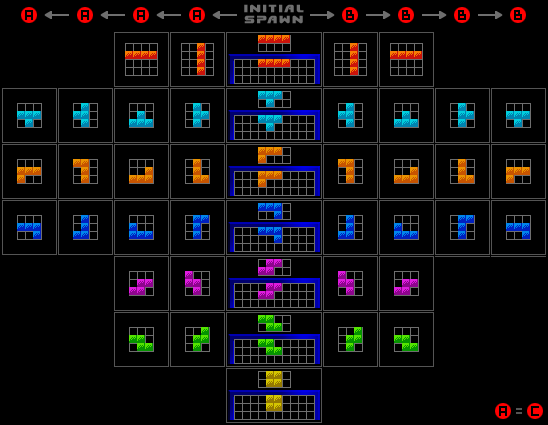
TGM's rotation system has plenty of restrictions, without being overly restricting. Err, well, that sounds like an oxymoron. But it's true! Certain restrictions on rotation prevent the player from placing pieces wherever he likes (especially in 20G), which forces the player to not overthink things.
TGM is a game that is nervous, fast paced, and completely dedicated to the talent of the player. Mihara focused on the quintessential essence of Tetris (placing pieces correctly) and through his game, challenged players to new heights. This is why the game is limited to fewer than 999 pieces, and timed: at this level of skill, survival is assumed. The real task is to prove your talent through more tetrises and a faster time to 999. This aspect of competition is emphasized wih a grading sytem (9 to 1, then S1 to S9, then finally Gm) which permits a general way of classifying the player skill.
Even if it's a game that favours a certain type of elite super human that can surpass 88 miles per hour, it doesn't exclude the rest of us: it's still just Tetris! You don't need to be a beast to enjoy playing the game, and without great difficulty a novice can discover the subtleties of the game for himself (though obviously, at 100 Yen a pop, it's a little different than 1 or 2 Euros per game).
Since the expiration of the original Tetris contracts in 1996, The Tetris Company (TTC), founded by Henk Rogers (holder of the Tetris' console rights and friend of Pajitnov), has since acquired complete rights to the game. Every game bearing the Tetris name must be approved by the company. Everything is standardized in a confidential document (revised periodically) which is called the Tetris Guidelines.
TTC's vision of Tetris is quite a bit different than that of Mihara's. Whereas Mihara approached the game methodically and polished the gameplay to satisfy hardcore gamers, TTC likes to keep things aimed squarely at casual players, with "cool" features of dubious lasting appeal.
To illustrate things more clearly, I will take the most striking difference from TGM: the feature called "Infinity". Recall above the dilemma of high speed play: if there isn't a brief delay before locking when a piece is placed, high speed play becomes impossible. Well. In TGM, this "locking delay" resets every time the piece drops lower. In games strictly following TTC's rules, this delay is reset by any movement or rotation. Combined with different wallkick rules that allow rotation in almost any circumstance, you can effectively place pieces as slowly as you want at all times, regardless of the gravity.


Rogers defends himself by saying that abusing this feature will
simply waste time that a skillful player could put to better use. And
in multiplayer games, this is absolutely true: Tetris DS's online mode
is a killer experience (to be avoided during exam time). The problem is
that the single player modes aren't penalizing the player for wasting
time, which in turn makes them a waste of time. To take another example
from Tetris DS, any player can reach 99,999,999 in marathon mode if
they have the patience. No talent is required.
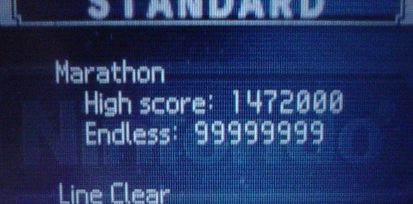
So. Mihara and the TTC have very different visions of Tetris. The frustrating thing is this: as time goes on the Tetris Guidelines are becoming more restrictive. The early rules were no doubt more reasonable (stuff like "the game area must be 10 by 20 blocks, plus 2 invisible spaces where the pieces spawn"), but the rules have gradually expanded to the point where they are choking the TGM series to death. The current rules make TTC's rotation rules and infinity feature mandatory (the official name for that is SRS, or Super Rotation System… oh the irony). It has neutered TGM's high speed challenge. TGM has lost its balls.
For a little more history, the guidelines first started affecting the series with TGM3 (2005). But at that time it was only mandatory for games to include SRS, not focus on it. TGM3 worked around this by letting the player choose between TGM and SRS rotation systems, the latter of which is much less popular among players. In contrast, by the time TGM ACE was released, Mihara was forced to only include TGM rotation later with an Xbox Live update, and even then it was missing many of the features players had come to expect from the classic rotation system. As a result of this, players largely kept to TGM3 and even made their own game. Which brings me to my next appendix.
Shortly before the release of this article, colour_thief brought to my attention the fact that Sega had a great influence on TGM's development. Here's what he wrote.
[...]
My only major criticism is that Sega Tetris gets only mentioned in passing. It's a Tetris (predating GB Tetris) that introduced lock time and ARE [ARE is the period of time between the lockdown of one tetromino and the appearance of the next one]. This allowed the gravity to get really fast and the pieces to scrape the bottom just like TGM. More than that, it also featured a slow-fast-slow-fast gravity curve that is similar to Master Mode [in Master Mode, the gravity resets at level 200] and unlike other games. Arcade players were hooked to this flavour of Tetris, continuing to prefer the Sega style even after the release of the Game Boy and other versions.
They'd play to max out the score... the lines... everything. And when they had completely conquered the game like this, they started making unofficial challenges. The '>' secret grade challenge from TGM [see that video] actually comes from this Sega Tetris culture: Players tried to build that shape as a training challenge. Is that not awesome? The game failed to measure their skill improvement (max score/lines is always just max score/lines) and yet they continued on, addicted and devoted to improving their tetris skills. Shimizu Tetris is a clone for X68000 that was released around that time period and culture of players. It's customizability made it possible to take the tetris concept to unexplored extremes. Popular settings were 20G, and also a screen width of 4. Reducing the screen width to 4 gives you a game very similar to Big Mode in TGM. Mihara has explicitly stated he took 20G from Shimizu Tetris, so it's likely that it inspired Big Mode as well. TGM VS, even if is was originally developed for a game show, uses mechanics that were established in Bloxeed. The PSX Sakura game and Sakura mode in TGM3 are modern takes of the Flashpoint concept. Truly, the debt to Sega Tetris games and culture is huge.
Being an arcade game, playing TGM is not a trivial task. You can't expect to have it readily sold in your local game shop for your nextnext-gen console. Except if you are rich enough to buy the actual arcade PCB (depending on which TGM version your want, prices may varie from "that's a little pricey for Tetris" to "eh, I'd rather buy myself a new car")(and you may add to that cost the price of an actual arcade cabinet/supergun), you'll play to play TGM is via your computer. There's two way to play TGM styled Tetris:
MAME
Perhaps the most logical solution is to use the famouse Multi Arcade Machine Emululator aka MAME. Currently, MAME emulates in a pretty good fashion TGM1 and TGM2 (note: don't forget to get the "Plus" verison that adds T.A. Death mode !), but surely won't be able to emulate TGM3 in at least 15 years (TGM3 runs on a Taito Type-X, which is nothing else than a disguised Windows XP machine - and thus hard to emulate)(EMULATE, not crack). Some years ago (around mid-late 2005 - just after the release of 0.99u4 to be more precise), Arika asked the MAME team to withdraw TGM2 support (it was then still pretty popular in the game center, and TTC gave them penalty because of some emulated footage on youtube). The team then complied, and it was then an epic adventure to get the right version of MAME and the rom to play TGM. Fortunately for us, they (as in, the MAME team) got TGM2 support back in 0.129.
It's still illegal for 99.99% of us to play TGM in MAME, so I won't write further informations. I'm sure your google-fu will find any necessary informations.
Clones and fangames
The japanese amateur/indie scene (famously called "doujinshi") is not a force to ignore. Each year, there's *tons* of good, not so good and brilliant game that are released (Doukutsu Monogatari ? Melty Blood ? Every Extend ? yup, that came right from the doujinshi scene). Naturally, it was bound to have some quality Tetris related game. Most of them are clone of TGM, its mechanics guessed by careful footage analysis or brute retro-engineering.
Heboris
The oldest one is Heboris. It started as a solo project to clone of TGM2 and was written in YGS2000 (YaneuraoGameScript 2000), a really easily moddable environment (you could load the script up in Notepad if you liked). Enter the 2ch community. For those you don't know, 2ch is like SomethingAwful, but even bigger. It had the power, the technology and the capabilities to rebuilt TGM to make it better, stronger, faster than it was before. More seriously, it's one of the most complete clone at the moment. It can easily simulate TGM1, 2 and 3 of course but also TGM:ACE, Tetris DS and DTET (another homebrew Tetris that was an experiment to improve SRS). However, its develepment is now stopped (or at least not publicly), as a result of Arika's withdrawal of some Heboris video on youtube. The main binary (Windows only) and one of the latest of 2ch's unnofficial patch can be downloaded from this very page. I figured out that the best way to introduce someone to TGM is to play it !
Texmaster
It is the work of a single japanese nicknamed Report, it's also a quite old homebrew. Its development stopped at a some point but then restated around 2008 when Report found Tetrisconcept and its quite rich wiki. Currently, it is the most convenient way to play TGM style Tetris. Launch, select your mode, play. There's also some handy feature, also present in Heboris but much more streamlined: auto game recording, statistics, screenshot and video export. It runs quite well on the three main computer platform (that is, Windows, Linux and OSX). The only possible issue of Tex' is its weird sound & background theme. I hope you like Counter-Strike Source ! You can get a list of mirror from Tetrisconcept's forum page.
Blockbox
BLockbox comes from Deniax, a dutch developper. Blockbox is not only a very good TGM clone, but the only serious attempt to have a multiplayer Tetris with TGM rotations (Heboris tried once but we haven't heard news of it for ages). Complete with leaderboard and replay, it is our (as in, Tetrisconcept's) multiplayer game of choice. Also, being an online game, you can play it from virtually anywhere, as long as you have an internet connection and java. Unfortunately, OSX is not supported ("until Apple fixes its broken Java" Deniaxs says).
Here we are at the end of the article. I will conclude with these words: More than a "simple Tetris", the TGM series is a brilliant example of the importance of gameplay in a videogame. Even if a game's basic concept is good, adding new elements can either make it boring (the infinity behaviour) or, on the other hand, raise it to new heights (20G gameplay). It is surprising that TTC hasn't yet developed a serious, competitive Tetris, because the concept has huge potential. Granted, there's TGM for single player competition and Tetris DS for multiplayer competition. But the first one is distributed only in Japan while the second one lacks a proper infrastructure. My dream: that Tetris becomes an electronic sport, commanding the same respect as Street Fighter, Starcraft or Counter-Strike ! :)
The series developed a devoted following in Japan. Just look at all the players who bore a "TGM-" tag in their name after Tetris DS was released or, more simply, how precise and thorough the Heboris Unofficial Expansion is now. For the Western world, the gathering point is Tetrisconcept (you don't mind if I make a little plug, do you ? :D) which was created by caffeine and kept alive by a bunch of heavily intoxicated tetriholics (myself included, hehe :) ). Do not hesitate to ask them any questions that come to mind !
I hope my little presentation helped you discover a new side of Tetris (a little more than "that game with blocks that fall") and, perhaps, even gave you an urge to try a competitive Tetris game. Or at least, the urge to dust off your old Game Boy ;)
.